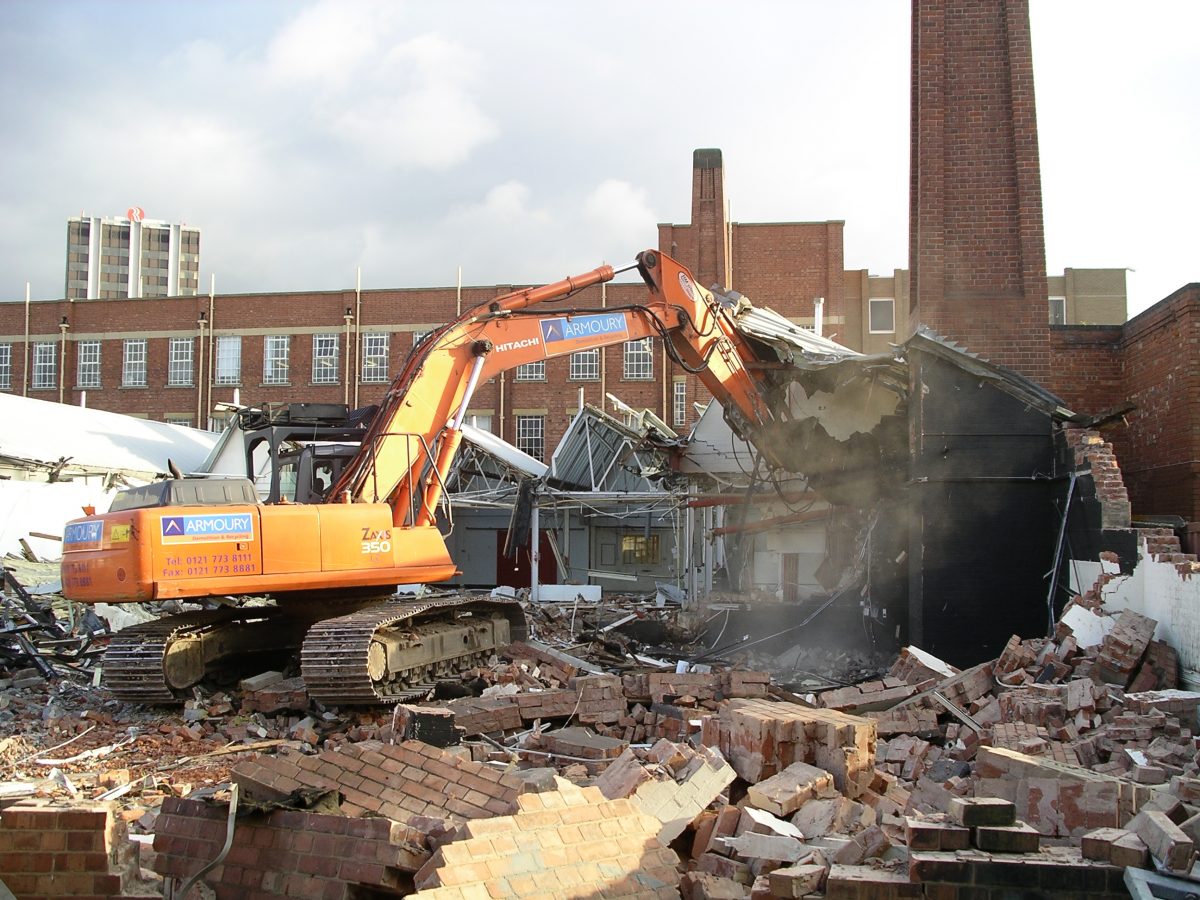
Keep the following in mind when working at sites with existing structures or other development.
• Asbestos was used in many building products until the late 1970s.
• Asbestos exposure can lead to serious—often fatal—lung diseases.
• The EPA and OSHA regulate companies’ demolition, renovation, processing, handling, and disposal of asbestos-containing material.
• Identify regulated asbestos-containing material (RACM).
• Verify contractors working with RACM have required training and professional licenses.
• Ensure adherence to all required removal and disposal work practices
• Verify RACM is disposed of in an authorized landfill facility.
• Lead can be found in construction in surface coatings, piping, flashing, tank linings and conduits.
• Lead is toxic and causes damage to numerous body systems.
• Renovation, repair, and painting of residential structures is strictly regulated.
• Lead paint removal from bridges and other structures may be regulated at the state and local levels.
• Demolition debris of commercial buildings may also be regulated at the state and local levels.
• Understand the scope of work and applicable requirements before you bid a project.
• Verify required training and professional licenses.
• Adhere to all required removal and disposal work practices.
• Unknown contamination from historical activities may exist.
• Disturbance and improper handling of soil may spread contaminants to ground water or other waterbodies.
• Reuse of soil as fill material may not be authorized.
• Exposure to unprotected workers and public may occur.
• Unauthorized handling, use or disposal can result in civil and criminal enforcement.
• Verify proper environmental due diligence is conducted for sites with any potentialfor contamination. Phase I and Phase II environmental site assessments are often conducted to identify existing and potential contamination.
• Verify that required work practices are followed for removal, handling, storage and disposal of contaminated soils.
• Only utilize personnel who have required training and proper equipment to perform soil
removal and disposal activities.
• Many items inside buildings can contain mercury including fluorescent lamps, mercury vapor lamps,
metal halide lamps, thermostats, various electrical switches and more.
• Mercury is an extremely persistent and toxic threat to human health, as well as the environment.
• Storage and disposal of mercury-containing materials is regulated by EPA and many state agencies under specific rules for “Universal Wastes.”
• Identify materials that contain mercury.
• Follow Universal Waste regulations, which were designed to promote proper handling and recycling while easing regulatory burdens. However, labeling, handling and disposal requirements must be followed.
• PCB-containing materials were used in builds and renovations between 1950 and 1979 for caulking, electrical transformers, capacitors and fluorescent light ballasts.
• PCBs cause a variety of serious, adverse health effects.
• Storage and disposal of PCB-containing materials is strictly regulated by the EPA.
• Identify materials that contain or are contaminated by PCBs.
• Ensure required work practices are followed for removal, repair, cleanup, storage and disposal of PCB-containing materials.
• Many items contain oils, fuels, and other chemicals, and improper decommissioning and dismantling can result in releases of these materials.
• Failure to properly remove and dispose of regulated materials can result in environmental contamination and public endangerment.
• Disposal of oils, fuels, refrigerants and other chemical substances is strictly regulated.
• Identify all potential sources of chemical storage, including underground storage tanks and piping.
• Verify all equipment that is to be dismantled and removed has been properly decommissioned.
• Identify and properly classify all chemical materials that are to be disposed.
• Ensure required work practices are followed for removal, handling and disposal of chemicals and contaminated equipment.
Need assistance on an upcoming project, contact us.